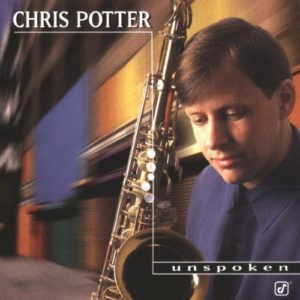
Starting next week (on Jun 28th), at The Nash, I’ll be teaching a 3-session class on transcription – this being the main means by which I’ve developed as a musician. We’re going to look at my process, what I do with it when I’m done, and how to get the most out of the process. Each participant will be challenged to take on all or at least part of a solo that interests them. Then, as a group, we’ll apply some of the strategies I use in my own practice to make transcription as effective as I feel it is.
With that in mind, I decided to go back and complete a solo I picked at years ago. Chris Potter has long been one of my favorite musicians. His fluency on the horn, rich sound, and the incredible fluidity of his ideas, have drawn me in time and time again. This solo was one of the very first that caught my ear. And it was one of the first times I’d ever heard a soloist navigate a really complex system of meters.
Lets break the tune down…
As the name suggests, the tune is largely in groups of 7 then 11, but I’ve chosen to write it 4/4 + 3/4 (7) 4/4 + 4/4 + 3/4 (11) just to make it easier to read and to see where the changes generally drop. To add to the intricacy, while the bridge is in 4/4, it’s grouped in 3-bar phrases, which Chris stays pretty faithful to in his solo. In contrast, Sco ignores the 3-bar structure and just jams out in 4-bar groups.
Chris’s solo, as is typical of his playing, is right down the middle on the tune, nailing every change and meter. Its a masterclass in “playing the changes” and navigating tricky rhythmic combinations. Rather than draw your attention to any one particular phrase, I suggest you just look at each mini-chorus in his solo and get a sense for the groupings and resolutions that give his lines the rock-solid feel it has.
And here’s the transcription:
- Chris Potter plays “Seven Eleven” (Bb Part)
- C Version? I might do this if there’s interest. Let me know in the comments.
A few practice takeaways
- The opening lines at [F] give you an idea of how he manipulates rhythm to dance around the meters. Whatever idea he’s playing gets compressed over the 3’s. This is pretty easy to practice…just omit a few notes whenever the meter gets shorter.
- Starting 4 before [L], Chris uses a lot of sounds inspired by the diminished scale. Given the D7 to F7 movement in the chords, and his tritone sub usage on A7 in the later choruses, all of this makes perfect sense. Its really nice to see some diminished lines that don’t fit all the cliches. Keep in mind that anything you play in the diminished scale can be cycled up or down in minor thirds, tritones…etc.
- Not really much of a practice tip, but check out the leaps in the line around [I]. So cool
Let me know what you think in the comments. Also, if you catch any errors, hit me up. I’m a real stickler for precision and won’t mind the feedback.


You really should do the C version!!
Great work!
A violinist’s vote for a C version… Thanks for the excellent, really helpful site!
Great transcription, thanks!